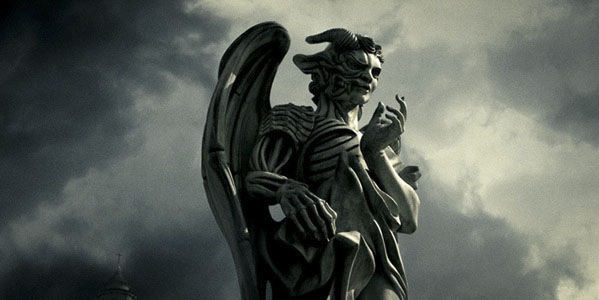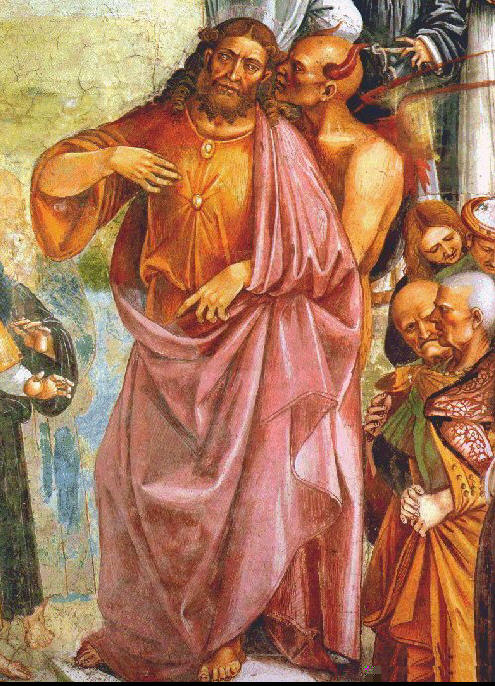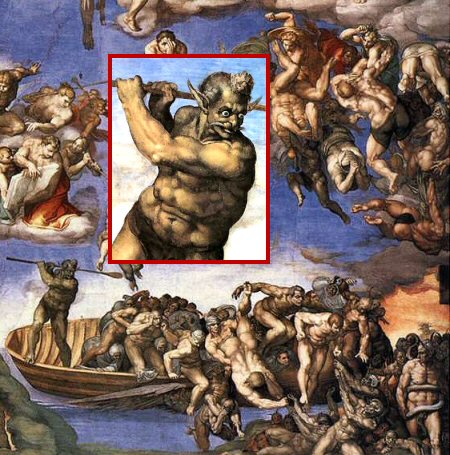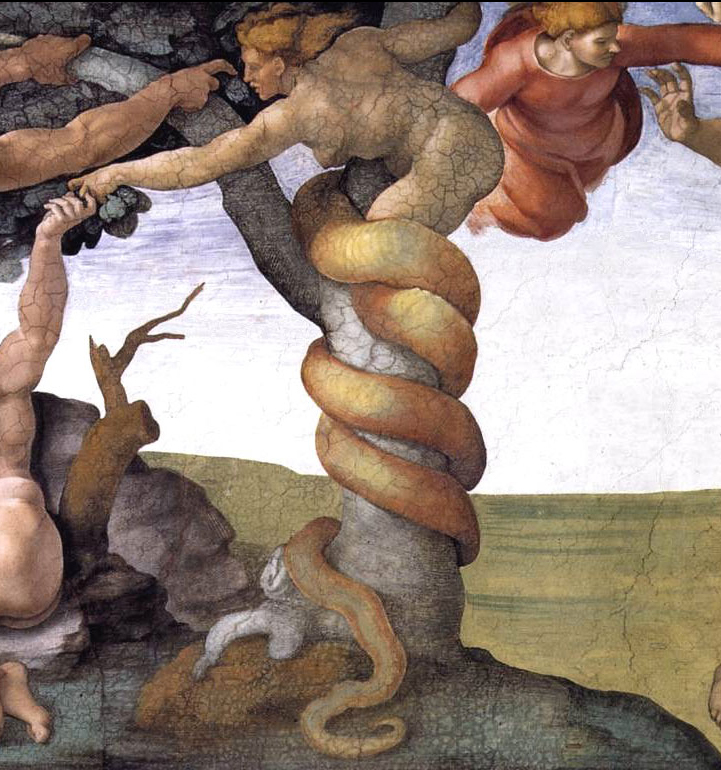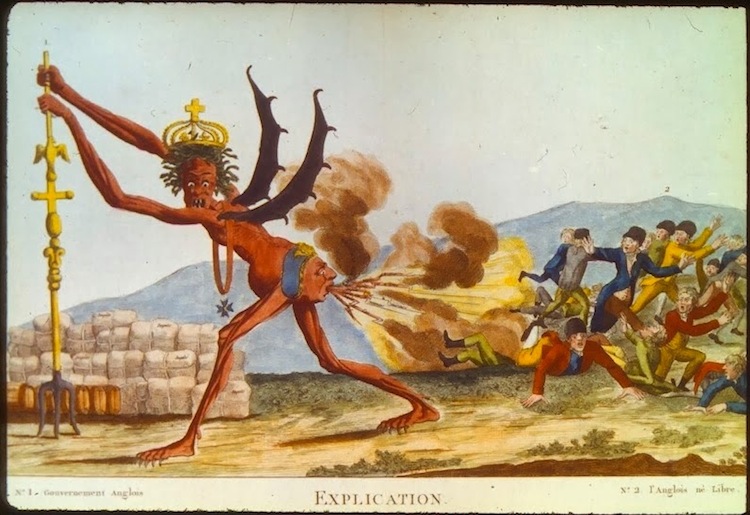Page 484
chief he had caused, “fled seven days on an ass, and escaping, begat the boys Ierosolumos and Ioudaios (Jerusalem and Judea).”
Referring to an invocation of Typhon-Seth, Professor Reuvens says that the Egyptians worshipped Typhon under the form of an ass; and according to him Seth “appears gradually among the Semites as the background of their religious consciousness.” The name of the ass in Coptic, AO, is a phonetic of IAO, and hence the animal became a pun-symbol. Thus Satan is a later creation, sprung from the overheated fancy of the Fathers of the Church. By some reverse of fortune, to which the gods are subjected in common with mortals, Typhon-Seth tumbled down from the eminence of the deified son of Adam Kadmon, to the degrading position of a subaltern spirit, a mythical demon — ass. Religious schisms are as little free from the frail pettiness and spiteful feelings of humanity as the partisan quarrels of laymen. We find a strong instance of the above in the case of the Zoroastrian reform, when Magianism separated from the old faith of the Brahmans. The bright Devas of the Veda became, under the religious reform of Zoroaster, daevas, or evil spirits, of the Avesta. Even Indra, the luminous god, was thrust far back into the dark shadow in order to show off, in a brighter light, Ahura-mazda, the Wise and Supreme Deity.
The strange veneration in which the Ophites held the serpent which represented Christos may become less perplexing if the students would but remember that at all ages the serpent was the symbol of divine wisdom, which kills in order to resurrect, destroys but to rebuild the better. Moses is made a descendant of Levi, a serpent-tribe. Gautama-Buddha is of a serpent-lineage, through the Naga (serpent) race of kings who reigned in Magadha. Hermes, or the god Taaut (Thoth), in his snake-symbol is Tet; and, according to the Ophite legends, Jesus or Christos is born from a snake (divine wisdom, or Holy Ghost), i.e., he became a Son of God through his initiation into the “Serpent Science.” Vishnu, identical with the Egyptian Kneph, rests on the heavenly seven-headed serpent.
The red or fiery dragon of the ancient time was the military ensign of the Assyrians. Cyrus adopted it from them when Persia became dominant. The Romans and Byzantines next assumed it; and so the “great red dragon,” from being the symbol of Babylon and Nineveh, became that of Rome.
The temptation, or probation, of Jesus is, however, the most dramatic
Page 485
occasion in which Satan appears. As if to prove the designation of Apollo, AEsculapius, and Bacchus, Diobolos, or son of Zeus, he is also styled Diabolos, or accuser. The scene of the probation was the wilderness. In the desert about the Jordan and Dead Sea were the abodes of the “sons of the prophets,” and the Essenes.These ascetics used to subject their neophytes to probations, analogous to the tortures of the Mithraic rites; and the temptation of Jesus was evidently a scene of this character. Hence, in the Gospel according to Luke, it is stated that “the Diabolos, having completed the probation, left him for a specific time, [[achri kairou]], and Jesus returned in the power of the Spirit into Galilee.” But the [[diabolos]], or Devil, in this instance is evidently no malignant principle, but one exercising discipline. In this sense the terms Devil and Satan are repeatedly employed. Thus, when Paul was liable to undue elation by reason of the abundance of revelations or epoptic disclosures, there was given him “a thorn in the flesh, an angel of Satanas,” to check him.
The story of Satan in the Book of Job is of a similar character. He is introduced among the “Sons of God,” presenting themselves before the Lord, as in a Mystic initiation. Micaiah the prophet describes a similar scene, where he “saw the Lord sitting on His throne, and all the host of Heaven standing by Him,” with whom He took counsel, which resulted in putting “a lying spirit into the mouth of the prophets of Ahab.” The Lord counsels with Satan, and gives him carte blanche to test the fidelity of Job. He is stripped of his wealth and family, and smitten with a loathsome disease. In his extremity, his wife doubts his integrity, and exhorts him to worship God, as he is about to die. His friends all beset him with accusations, and finally the Lord, the chief hierophant Himself, taxes him with the uttering of words in which there is no wisdom, and with contending with the Almighty. To this rebuke Job yielded, making this appeal: “I will demand of thee, and thou shalt declare unto me: wherefore do I abhor myself and mourn in dust and ashes?” Immediately he was vindicated. “The Lord said unto Eliphaz . . . ye have not spoken of me the thing that is right, as my servant Job hath.” His integrity had been asserted, and his prediction verified: “I know that my Champion liveth, and that he will stand up for me at a later time on the earth; and though after my skin my body itself be corroded away, yet even then without my flesh shall I see God.” The pre-

Moe is the founder of GnosticWarrior.com. He is a father, husband, author, martial arts black belt, and an expert in Gnosticism, the occult, and esotericism.

